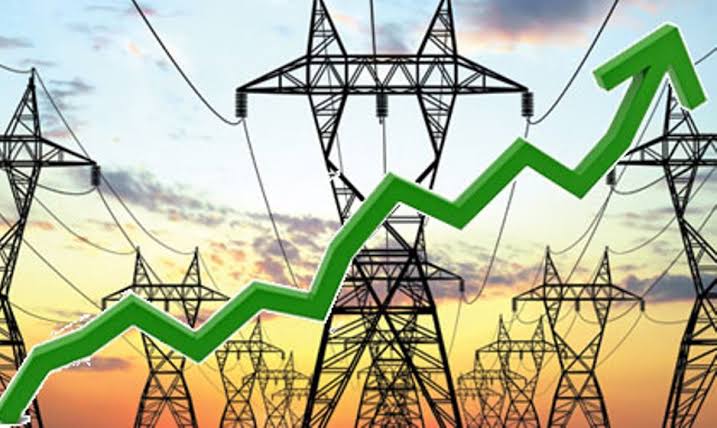National Issues
Tariff increase: Are the DisCOs ready to bridge the metering gap and deliver on quality services? -By Abachi Ungbo

Electricity consumers are apoplectic with rage over the outrageous bills which they believe and rightly so, are not reflective of their true consumption amid the epileptic supply of power.
It is sad to say, that consumers are simply at the mercy of the distribution companies (DisCos) with litany of bitter experiences to recite. For instance, it boggles the mind that a community that have been enveloped in darkness due to a defective transformer for about 3 months could be handed a hefty bill with inexplicably abnormal arrears, a month after replacing it largely through self help.
The increment in electricity tariff is part of a bitter mixture which included increases in petrol pump price, value added tax, food prices among others which is proving hard for many to swallow. Faced with this reality, the poor may just be on their way out of the power grid. Not to mention the punch the situation is bound to pack on businesses.
The subsidy on power predates the privatisation of the power sector and even after it was privatized, government had been making generous interventions which engendered strident calls for government to restrict itself to regulatory functions.
However, the failure by the DisCos to optimize the efforts had led government to threaten before the pandemic to discontinue with subsidy. According to the Minister of Power “government cannot continue to subsidise because what they’re doing is that they collect 3000 MW and pay for only 1000 MW. That’s 15% of what they are collecting. So, government is the one completing the payment.” It was reported that about 1.7 trillion Naira was spent by way of supplementing tariffs shortfalls.
Interestingly, the transition to cost reflective tariff which was to ensure the elimination of government subsidies by implication transferring the costs of electricity supply to consumers constituted a part of the preconditions for the 3.4 billion dollars International Monetary Fund (IMF) loan which Bloomberg described as the “single biggest disbursement for any country yet with the coronavirus pandemic” at the time of the approval in April 28, 2020.
To attest to this, a letter jointly signed by the Central Bank governor and Minister of Finance said “we’re also advancing in our power sector reforms with technical assistance and financial support from the world bank- including capping electricity tariff shortfalls this year to 380 billion naira and moving to cost reflective tariffs in 2021.”
Though, there have been attempts at upward review of tariff which have been met with popular disapproval in apparent bid to ensure that the cost of production and profit are captured which had always being advocated by many. So, tariff review had long been in the works.
As a result of a catalogue of indictments against the DisCos over the quality-of-service delivery, a new tariff system tagged Service Reflective Tariff was introduced in September 2020. Under the new system, the Nigerian Electricity Regulatory Commission (NERC) said “customers will begin to pay for electricity based on how long they receive power daily. To this effect customers have been divided into five (A-E) bands so that payments can reflect the quality of services offered based on a minimum average hour of supply.”
However, it is only logical that increment in tariff should be conditional upon metering of consumers which is the surest way of measuring electricity usage as an avenue to dispense with estimated billing; which has become a tool in conveniently exploiting consumers with inflated tariff far in excess of what is approved by NERC.
There’s a huge metering deficit which clearly betrays the regulators as weak since embedded in the Performance Agreement for the DisCos is the closing of the metering gap which should be enforced.
However, the provision of meters has clearly become a tall order owing to the fact that since 2013, the DisCos have serially failed at meeting the metering targets.
In a report tagged “Analysis of meter distribution across distribution companies report for the month of November 2020” N.E.R.C stated that under the Metering Asset Provider (MAP) only 525,120 meters were installed in two years from January 2019 to November 2020 out of the 7,588,972-target set by the DisCos. Likewise, under the National Mass Metering Programme (NMMP) which started in October 2020 they failed to meet the 1 million metering target set for December of the same year with only 16,308 units installed.
Experts have severally alluded to lack of capacity on the part of the DisCos. For instance, the Managing Director, Transmission Company of Nigeria (TCN) hinted at mistakes in the privatization exercise which have led to the take over of the DisCos by weak companies; he added that recapitalisation was the way to go. No doubt the companies have liquidity and infrastructural challenges.
Apparently, the challenges across the power sector value chain are huge. Recently, the punch newspaper reported in January that a low load demand by DisCos and inadequate gas forced 10 of the 29 power plants into inactivity. A report by the French Agency for Development stated 10 billion dollars in investments would be required by the DisCos to deliver quality electricity services.
In all fairness, the DisCos are grappling with electricity theft which is a global challenge and comes with heavy economic losses. Aside criminalising the acts, aggressive periodic checks and incentivizing whistle blowing; the need for the deployment of technology in detection is critical.
We have reached an epoch where investments should be focused in meeting the target of the government’s Sustainability Energy for All (SE4ALL) of decreasing by 10%, population without electricity access by 2030 which is an implementation drive of the Sustainable Development Goal-No: 7.
ABACHI UNGBO
abachi007@yahoo.com



















